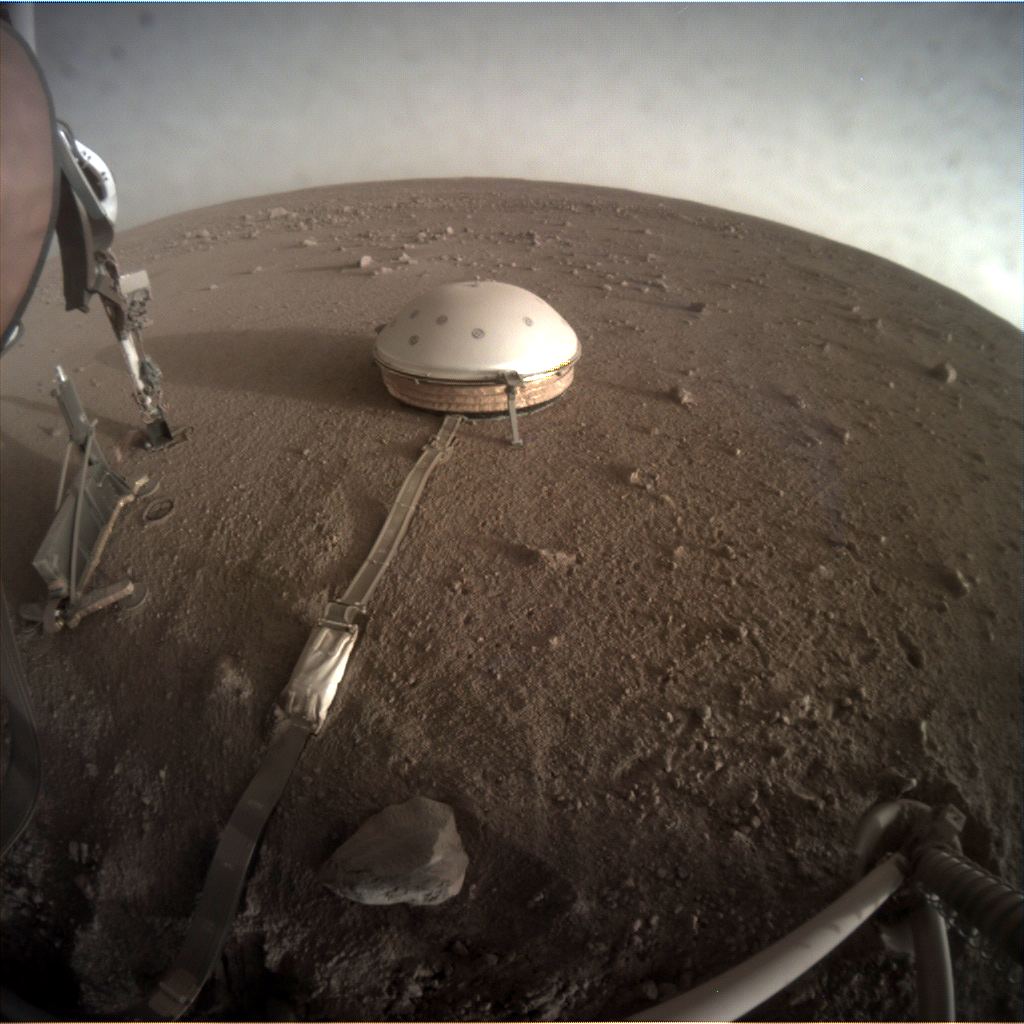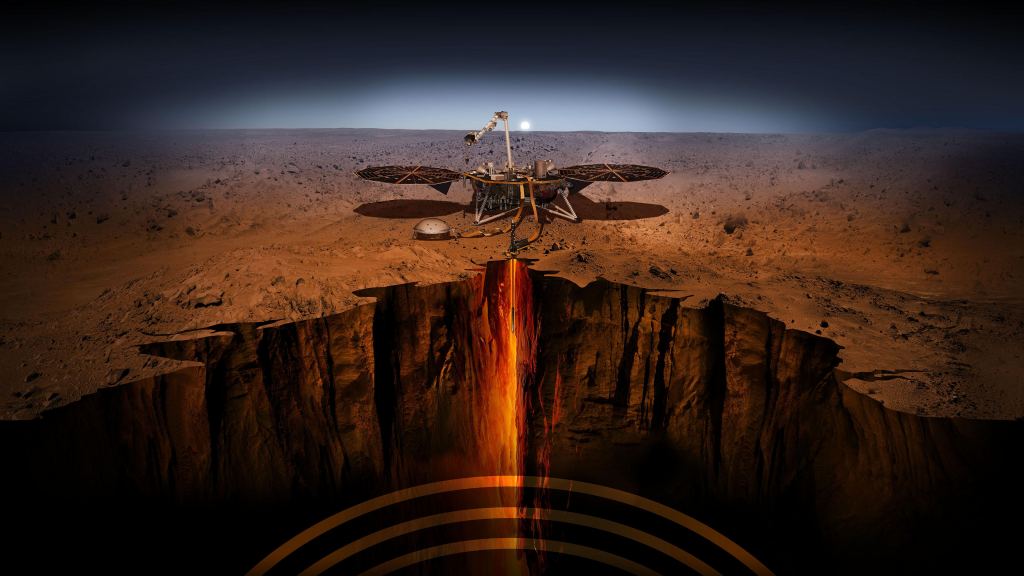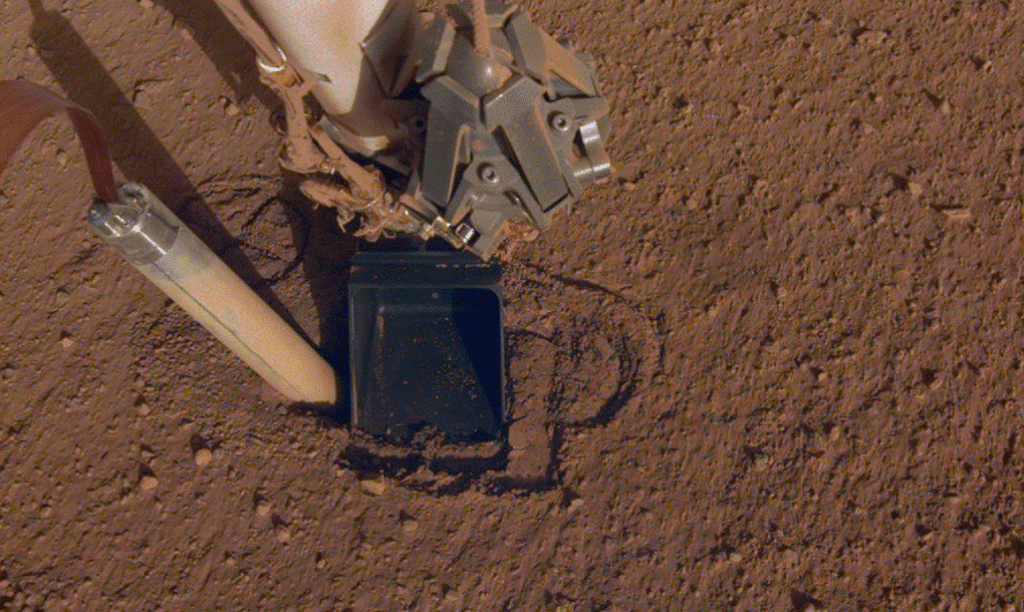There's at least one small bit of good news in these challenging Covid-19 times. And it's playing out on the surface of Mars. In a brief Tweet, NASA says that using InSight's robotic arm to push the Mole into the ground is working, somewhat.
As the tweet makes clear, this is no quick fix. They're going to pursue this method for the next few weeks and see where it gets them. But considering the obstacles that InSight has faced over the months, a few more weeks is hopeful.
The InSight (Interior Exploration using Seismic Investigations, Geodesy and Heat Transport) lander arrived on Mars at the end of November 2018. Its mission is to understand what's going on in the interior of Mars, to shed light on how it and other terrestrial planets formed. It's investigating the interior with a suite of instruments.
One of the lander's primary instruments is the Heat Flow and Physical Properties Package (HP3). HP3's nickname is 'the mole' because it has to penetrate into the Martian soil to do its job. Once it's deep enough, it'll measure the heat flowing from the planet's interior to the surface. Those results will reveal details about the interior of Mars.
But the mole has to self-hammer its way into the ground, and that hasn't been going according to plan. The mole relies on the friction of the soil surrounding it to penetrate, and that hasn't been happening. The Martian soil at InSight's landing site is much firmer than expected. Rather than pressing onto the mole as it penetrates, and the necessary friction, the soil is remaining stubbornly compact. NASA's calling it "duracrust," and it's an unusual kind of sub-surface soil.
The InSight team has tried a variety of methods to get the mole into the ground. We've covered the trials and tribulations here at Universe Today. So far, this is the only thing that's worked.
And it's not clear what else they can try if this doesn't work.
 Universe Today
Universe Today


